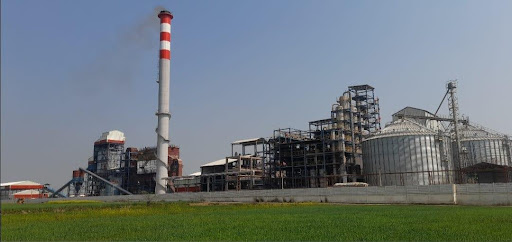
Waste water treatment is a critical aspect of environmental stewardship and public health protection. As the global population grows and industrial activities expand, the volume of wastewater generated continues to rise, presenting significant challenges for treatment facilities worldwide. In this context, enzymes emerge as valuable tools for enhancing the efficiency and sustainability of waste water treatment processes. This article delves into the multifaceted role of enzymes in waste water treatment, highlighting their functions, applications, and potential for driving innovation in the field.
Understanding Enzyme and Their Functions
Enzyme, biological catalyst comprised of proteins, play pivotal roles in facilitating chemical reactions in living organisms. The unique structure of each enzyme, dictated by its amino acid sequence, determines its specificity and catalytic activity. Enzymes function by lowering the activation energy required for chemical reactions to occur, thereby accelerating reaction rates without being consumed in the process. In waste water treatment, enzymes target specific organic pollutants, such as fats, proteins, and cellulose, facilitating their breakdown into simpler, less harmful compounds.
The Importance of Waste Water Treatment
Environmental Impact
Untreated waste water poses significant environmental risks, including eutrophication, habitat degradation, and contamination of water sources. The discharge of untreated waste water can lead to algal blooms, oxygen depletion, and disruption of aquatic ecosystems, underscoring the importance of effective waste water treatment in preserving environmental health and biodiversity.
Public Health Implications
Pathogens and chemical contaminants present in waste water pose substantial risks to public health. Waterborne diseases, such as cholera and typhoid fever, can spread rapidly through contaminated water sources, endangering human populations, particularly in areas with inadequate sanitation infrastructure. Comprehensive waste water treatment is essential for removing pathogens and chemical pollutants, safeguarding public health and well-being.
Enzymes in Waste Water Treatment: Applications and Mechanisms
Enzyme-aided waste water treatment involves the incorporation of specific enzymes into treatment processes to enhance the degradation of organic pollutants. Lipases, proteases, and cellulases are among the enzymes commonly employed in waste water treatment, targeting fats, proteins, and cellulose, respectively. These enzymes catalyze the breakdown of complex organic molecules into simpler forms, facilitating their removal from the water. Enzyme technology continues to evolve, with researchers exploring novel enzymes and enzyme combinations to improve treatment efficiency and effectiveness.
Sustainability Aspects of Enzyme-based Waste Water Treatment
Energy Efficiency
Enzyme-based treatment processes often require lower energy inputs compared to conventional methods. The targeted action of enzymes enables pollutant degradation at lower temperatures, reducing the energy demands of treatment facilities. Additionally, enzyme-based treatments can be more resource-efficient, utilizing smaller quantities of enzymes while maintaining high catalytic activity.
Resource Recovery and Circular Economy
Enzyme-based waste water treatment offers opportunities for resource recovery and circular economy practices. Certain enzymes facilitate the extraction of valuable compounds from waste water, such as phosphorus or biogas, promoting the reuse of resources and minimizing waste generation. By integrating enzyme-based treatments with resource recovery initiatives, waste water treatment facilities can enhance sustainability and resource efficiency.
Challenges and Future Directions
Cost and Scalability
Despite their numerous advantages, enzyme-based waste water treatment methods face challenges related to cost and scalability. The production and implementation of enzymes can be costly, limiting their widespread adoption. Additionally, scaling up enzyme-based treatments from laboratory settings to industrial-scale operations presents technical and logistical challenges that require innovative solutions.
Innovations and Research Opportunities
Ongoing research and innovation hold promise for overcoming the limitations of enzyme-based waste water treatment. Advances in enzyme stabilization, immobilization techniques, and bioprocess engineering can enhance enzyme performance and scalability, making enzyme-based treatments more economically viable and accessible. Furthermore, the integration of emerging technologies, such as artificial intelligence and machine learning, into wastewater treatment systems can optimize enzyme dosing, predict treatment outcomes, and improve overall process efficiency.
Conclusion
Enzyme-based waste water treatment represents a promising approach for addressing the environmental and public health challenges associated with waste water pollution. By harnessing the catalytic power of enzymes, treatment facilities can achieve more efficient pollutant removal, reduce energy consumption, and promote resource recovery. Despite existing challenges, ongoing research and innovation in enzyme technology offer opportunities for advancing the sustainability and effectiveness of waste water treatment processes. As the global community strives to achieve water security and environmental sustainability, enzymes stand poised to play a crucial role in shaping the future of waste water treatment.
Recent Posts

The Role of Enzymes in Maize-to-Ethanol Fermentation
With the rising demand for renewable energy sources and sustainable fuel alternatives, ethanol production has gained significant momentum worldwide. Ethanol, also known as bioethanol, is a biofuel commonly used as a renewable alternative to fossil fuels. One of the most popular feedstocks for ethanol production is maize (corn), primarily due to its high starch content, wide availability, and suitability for large-scale production.

Challenges in Rice to Ethanol Fermentation and How to Overcome Them
Rice is one of the most important staple crops globally, particularly in Asia, where it constitutes a significant portion of daily food intake. However, rice also has tremendous potential as a feedstock for ethanol production due to its high starch content.

Uses of Enzymes in Grain to Ethanol Fermentation: A Comprehensive Guide
Ethanol production through the fermentation of various feedstocks has gained considerable attention as a renewable energy source. Among the many feedstocks, grains such as corn, wheat, rice, barley, and sorghum play a crucial role due to their high starch content, which can be effectively converted into ethanol.
Catalysts Connect
Keep up to date with our latest news and analysis by subscribing to our regular magazine and newsletter

Post a comment
Your email address will not be published.